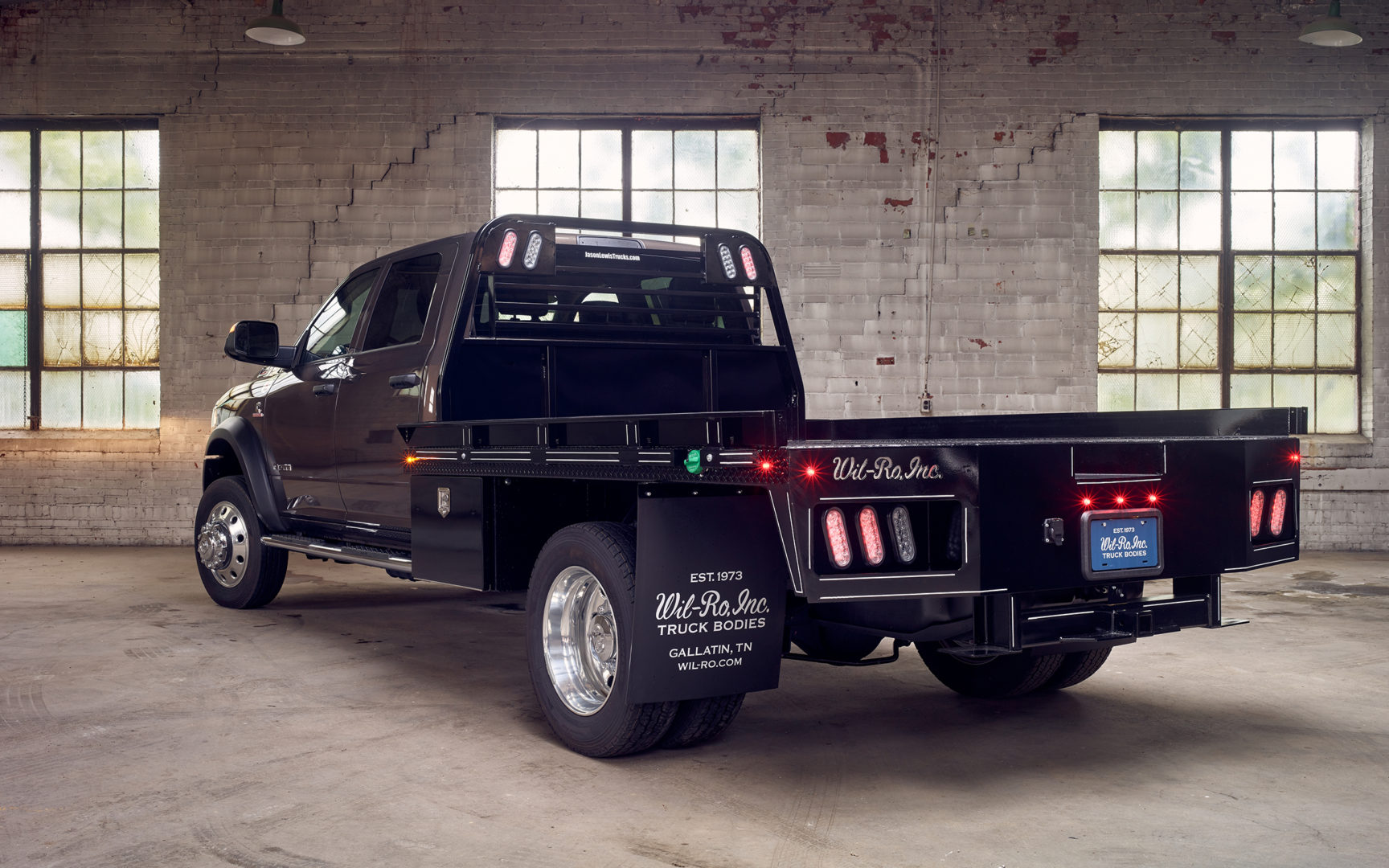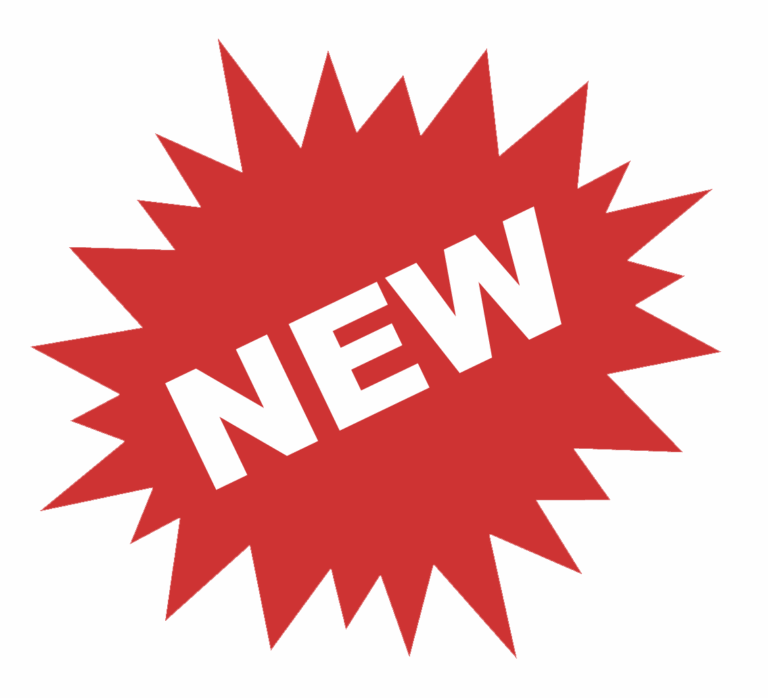Flatbed Schematics: The Blueprint of Robustness and Efficiency
Flatbed Schematics: The Blueprint of Robustness and Efficiency cars.truckstrend.com
In the world of heavy haulage, specialized transport, and industrial machinery, the term "flatbed" evokes images of strength, versatility, and the capacity to move massive loads. But beneath the rugged exterior of every flatbed lies a meticulously planned, engineered, and documented design – what we collectively refer to as Flatbed Schematics. These aren’t just simple drawings; they are the comprehensive technical blueprints, diagrams, and specifications that dictate every bolt, weld, wire, and component, ensuring a flatbed’s structural integrity, operational efficiency, and regulatory compliance.
Flatbed schematics are the bedrock of safe and effective design, manufacturing, and maintenance of flatbed trailers, truck bodies, or even the flat platforms used in various industrial applications like automated guided vehicles (AGVs) or large-format printers. Without these detailed plans, the construction of a reliable flatbed would be a perilous guesswork, leading to catastrophic failures, inefficiencies, and significant safety hazards. This article delves into the intricate world of flatbed schematics, exploring their importance, components, creation process, and the myriad benefits they offer to manufacturers, operators, and the entire logistics ecosystem.
Flatbed Schematics: The Blueprint of Robustness and Efficiency
What Are Flatbed Schematics? A Deep Dive
At its core, flatbed schematics encompass all technical documentation necessary to design, build, operate, and maintain a flatbed structure. This includes, but is not limited to:
- Mechanical Drawings: Detailed 2D and 3D CAD (Computer-Aided Design) models showing the frame, chassis, decking, cross-members, kingpin placement, axle positions, and overall dimensions. These drawings specify materials, thicknesses, welding details, and fastening methods.
- Structural Analysis Reports: Derived from Finite Element Analysis (FEA), these reports illustrate stress points, load distribution, deflection under load, and fatigue life, ensuring the design can withstand intended forces.
- Hydraulic Schematics: For specialized flatbeds (e.g., lowboys with hydraulic detachable goosenecks, tilt-decks, or self-loading systems), these diagrams detail the pump, cylinders, valves, hoses, and fluid reservoirs, indicating flow paths and pressure ratings.
- Electrical Schematics: Essential for lighting systems (marker lights, brake lights, turn signals), ABS (Anti-lock Braking System) wiring, auxiliary power outlets, and any integrated telematics or sensing equipment. These show wire gauges, fuse locations, connector types, and grounding points.
- Bill of Materials (BOM): A comprehensive list of every component, part, and raw material required, including quantities, specifications, and sometimes supplier information.
- Assembly Instructions: Step-by-step guides for manufacturing and assembling the flatbed, ensuring consistency and quality control.
- Safety and Compliance Documentation: References to relevant industry standards (e.g., DOT regulations, SAE standards, ISO norms) and safety features integrated into the design.

The purpose of these schematics is multi-faceted: they serve as a universal language for engineers, manufacturers, and technicians, ensuring that the final product meets design intent, performs reliably, and adheres to safety and legal requirements.

The Indispensable Role of Accurate Flatbed Schematics
The precision embedded within flatbed schematics translates directly into tangible benefits across the entire lifecycle of the equipment. Their importance cannot be overstated:
- Ensuring Uncompromising Safety: This is perhaps the paramount benefit. Accurate schematics ensure that the flatbed is designed to safely carry its maximum rated load, distribute weight effectively, and withstand dynamic forces encountered during transit. They prevent structural failures, improve braking performance, and ensure all safety lights and signals function correctly, protecting cargo, operators, and the public.
- Optimizing Performance and Efficiency: Well-engineered schematics lead to designs that minimize tare weight while maximizing payload capacity. Optimized aerodynamics (for trailers), efficient suspension systems, and proper tire selection, all detailed in schematics, contribute to better fuel economy and reduced wear and tear, leading to lower operating costs.
- Facilitating Precise Manufacturing: Schematics provide explicit instructions for fabricators, welders, and assemblers, minimizing errors, reducing rework, and accelerating the production process. This consistency ensures every unit built adheres to the same high standards.
- Streamlining Maintenance and Repairs: Detailed schematics make troubleshooting and repairs significantly easier. Technicians can quickly identify components, trace electrical circuits, or understand hydraulic flow, reducing downtime and maintenance costs.
- Guaranteeing Regulatory Compliance: Flatbeds must adhere to stringent national and international transportation regulations regarding dimensions, weight limits, lighting, braking, and safety features. Schematics serve as proof of compliance during inspections and certifications, avoiding costly penalties and legal issues.
- Enabling Customization and Innovation: For specialized transport needs, schematics are the foundation for custom designs. They allow engineers to integrate unique features, adapt to specific cargo requirements, or incorporate new technologies (e.g., smart sensors, telematics) into the existing framework seamlessly.

Key Components and Design Considerations in Flatbed Schematics
Designing a flatbed is a complex engineering challenge that balances strength, weight, cost, and functionality. Key considerations detailed in schematics include:
- Chassis and Frame: The backbone of the flatbed. Schematics specify materials (high-strength steel, aluminum alloys), beam types (I-beams, C-channels), cross-member spacing, and welding procedures. Load path analysis is critical here to prevent localized stress concentrations.
- Decking: The surface on which cargo rests. Materials range from wood (oak, apitong) for flexibility and grip, to steel (checker plate) for durability, or composite materials for weight reduction. Schematics detail attachment methods, drainage, and anti-slip treatments.
- Suspension Systems: Critical for ride quality, cargo protection, and tire wear. Schematics differentiate between mechanical spring suspensions (cost-effective, robust) and air ride suspensions (smoother ride, adjustable height, better cargo protection). Axle configurations (single, tandem, tri-axle) and their spacing are also meticulously mapped out.
- Axles, Wheels, and Tires: Detailed specifications for axle capacity, wheel types (steel, aluminum), tire size, load rating, and pressure recommendations are crucial for safe operation and optimal performance.
- Braking Systems: Air brake systems are standard. Schematics show the air lines, brake chambers, slack adjusters, ABS sensors, and wiring, ensuring compliant and effective stopping power.
- Electrical and Lighting Systems: All required DOT-compliant lighting (marker, clearance, brake, turn signal, license plate lights) are mapped, along with wiring harnesses, connectors, and protection against environmental elements. Auxiliary power outlets or specialized wiring for additional equipment are also included.
- Cargo Securement Points: Winches, D-rings, stake pockets, rub rails, and other tie-down points are strategically placed and reinforced in the design to ensure cargo can be safely secured according to regulations.
- Accessibility and Maintenance: Schematics also consider ease of access for routine inspections, lubrication points, and the replacement of wear parts, contributing to the flatbed’s longevity.
The Process of Creating Flatbed Schematics
The development of flatbed schematics follows a structured engineering process, ensuring precision and reliability:
- Requirements Gathering: The initial phase involves understanding the client’s needs, intended payload (weight, dimensions, type), typical routes, operational environment, and specific regulatory requirements.
- Conceptual Design: Engineers begin with sketches and preliminary layouts, exploring different configurations and material choices. This phase often involves trade-off analyses between cost, weight, and performance.
- Detailed CAD Modeling: Using advanced CAD software (e.g., SolidWorks, Inventor, AutoCAD), the conceptual design is transformed into precise 2D drawings and 3D models. Every component, joint, and dimension is accurately represented.
- Structural Analysis (FEA): The 3D CAD model is subjected to Finite Element Analysis. This simulation identifies stress concentrations, predicts deformation under various load conditions, and helps optimize material usage and structural integrity, ensuring the design meets safety factors.
- Component Specification: All proprietary and off-the-shelf components (axles, brakes, lights, tires, suspension parts) are specified, ensuring compatibility and performance.
- Drafting and Detailing: From the 3D models, detailed 2D manufacturing drawings are generated. These include specific views, dimensions, tolerances, material callouts, welding symbols, and assembly instructions that fabricators will follow.
- Review and Approval: The complete set of schematics undergoes rigorous internal engineering review, followed by client approval. Regulatory compliance checks are also performed to ensure the design meets all legal standards.
- Prototyping and Testing (Optional but Recommended): For new designs, a prototype may be built and subjected to physical testing to validate the schematics and identify any unforeseen issues before mass production.
- Documentation and Version Control: All schematics and supporting documents are meticulously organized, cataloged, and placed under strict version control to track changes and revisions throughout the product’s lifecycle.
Types of Flatbed Schematics and Their Applications
While the core principles remain, flatbed schematics vary significantly based on the specific application:
- Standard Flatbed Trailer Schematics: These are for general cargo transport, typically detailing a straight deck with standard axle configurations and securement points.
- Drop-Deck and Lowboy Trailer Schematics: Designed for oversized and overweight equipment, these schematics feature lower deck heights, often incorporating hydraulic detachable goosenecks, multiple axle lines, and specialized ramps. The hydraulic and structural diagrams are considerably more complex.
- Extendable Flatbed Trailer Schematics: For exceptionally long loads, these schematics detail the telescopic frame mechanisms, locking pins, and additional support structures that allow the trailer to extend its length.
- Specialized Flatbed Schematics: This category includes schematics for roll-off flatbeds, tilt-decks, self-loading flatbeds, or custom platforms for specific industrial machinery (e.g., large CNC machines, industrial printers, or automated assembly lines). These often feature complex hydraulic, pneumatic, and electrical systems tailored to their unique function.
- Truck Body Flatbed Schematics: For flatbeds integrated directly onto truck chassis, these schematics detail the subframe, mounting points, body dimensions, and any integrated toolboxes or cranes.
Challenges and Solutions in Flatbed Schematic Design
Designing flatbed schematics is not without its hurdles:
-
Challenges:
- Weight vs. Strength: Balancing the need for robust strength with minimizing tare weight to maximize payload.
- Dynamic Loading: Accounting for the complex forces applied during acceleration, braking, turning, and traversing uneven terrain.
- Regulatory Evolution: Keeping up with constantly changing transportation laws and standards across different regions.
- Material Science: Selecting the optimal materials that offer the best strength-to-weight ratio, durability, and corrosion resistance at a reasonable cost.
- Customization Complexity: Integrating unique features for specialized cargo without compromising the base structure.
- Integration of Smart Technologies: Incorporating sensors, telematics, and active safety systems into the electrical and structural design.
-
Solutions:
- Advanced Simulation Tools: Utilizing sophisticated FEA and CFD (Computational Fluid Dynamics) software to optimize designs virtually before physical prototyping.
- Modular Design: Developing standardized sub-assemblies that can be easily configured or customized to meet various requirements, reducing design time and costs.
- Collaborative Platforms: Employing cloud-based CAD and PLM (Product Lifecycle Management) systems to facilitate real-time collaboration among design teams, manufacturers, and clients.
- Continuous Research & Development: Investing in R&D to explore new materials, manufacturing techniques (e.g., additive manufacturing for components), and smart technologies.
- Expert Consultation: Engaging with regulatory bodies and specialized consultants to ensure designs are always compliant.
- Lifecycle Approach: Designing not just for manufacturing and operation, but also for ease of maintenance, repair, and eventual end-of-life recycling.
Practical Advice and Actionable Insights
For anyone involved in the design, manufacturing, or operation of flatbeds, here are some actionable insights:
- Prioritize Safety: Always design with the highest safety factors in mind, exceeding minimum regulatory requirements where possible.
- Invest in Expertise: Employ skilled engineers proficient in CAD, FEA, and relevant industry standards. The cost of good design is far less than the cost of failure.
- Maintain Meticulous Documentation: Keep all schematics, calculations, and revision histories organized and accessible. This is crucial for future modifications, troubleshooting, and legal compliance.
- Embrace Technology: Leverage modern CAD, FEA, and PLM software to improve design accuracy, efficiency, and collaboration.
- Consider the Full Lifecycle: Design for ease of manufacturing, efficient operation, simple maintenance, and eventual responsible disposal or recycling.
- Regularly Review and Update: As regulations change and new technologies emerge, periodically review and update existing schematics to ensure continued relevance and compliance.
Conclusion: The Unsung Heroes of Heavy Haulage
Flatbed schematics are the unsung heroes behind the robustness and efficiency of modern transport and industrial platforms. They are more than just drawings; they are the intellectual property, the detailed instruction manual, and the legal proof that ensures a flatbed can safely and reliably perform its demanding tasks. From preventing catastrophic failures to optimizing fuel consumption and facilitating seamless maintenance, the precision and foresight embedded in these schematics are paramount. As technology advances and transportation needs evolve, the art and science of flatbed schematic design will continue to innovate, pushing the boundaries of what is possible in the world of heavy hauling and specialized industrial applications.
Pricing for Services Related to Flatbed Schematics
The "price" of flatbed schematics isn’t a fixed product cost but rather the cost of the engineering and design services involved in their creation and maintenance. Below is a hypothetical pricing table for common services related to flatbed schematics, reflecting industry averages. These rates can vary significantly based on complexity, regional labor costs, and the expertise of the engineering firm.
| Service Category | Description | Typical Pricing Model | Estimated Cost Range | What’s Included |
|---|---|---|---|---|
| Basic Schematic Drafting | Conversion of conceptual designs/sketches into basic 2D CAD drawings (e.g., general arrangement, simple sub-assembly). | Per Hour / Per Drawing | $75 – $150 per hour / $500 – $2,000 per drawing | Initial 2D layouts, basic dimensioning, material call-outs for simple components. |
| Advanced CAD Modeling | Creation of detailed 3D models for complex flatbed structures, including assemblies, sub-assemblies, and detailed part models. Essential for visualization and advanced analysis. | Per Hour / Per Project | $100 – $250 per hour / $5,000 – $25,000+ per project | Full 3D model, detailed component geometries, assembly relationships, exploded views. Suitable for manufacturing and simulation. |
| Structural Analysis (FEA) | Finite Element Analysis to simulate structural performance under various load conditions (static, dynamic, fatigue), identify stress points, and optimize material usage. | Per Simulation / Per Project | $2,000 – $15,000+ per simulation | Detailed stress maps, deformation analysis, safety factor reports, material recommendations, design optimization suggestions. |
| Hydraulic/Electrical Schematics | Development of detailed circuit diagrams for hydraulic systems (pumps, valves, cylinders) and electrical systems (wiring, lighting, sensors, ABS). | Per Hour / Per System | $120 – $200 per hour / $3,000 – $10,000+ per system | Full circuit diagrams, component specifications, wire gauges, fuse locations, connector details, troubleshooting guides. |
| Custom Flatbed Design & Engineering | Comprehensive design service for entirely new or highly specialized flatbed configurations, from concept to detailed manufacturing drawings and documentation. | Per Project | $15,000 – $100,000+ | Full suite of services: conceptual design, detailed CAD, FEA, material selection, component specification, BOM, manufacturing drawings, assembly instructions, regulatory review support. Highly dependent on complexity and scale. |
| Design Review & Consulting | Expert review of existing flatbed schematics for optimization, safety compliance, or identification of potential issues. | Per Hour / Per Day | $150 – $300 per hour / $1,200 – $2,400 per day | Thorough review of drawings and calculations, identification of areas for improvement, compliance checks, risk assessment, expert advice. |
| Revisions & Updates | Modifications or updates to existing schematics based on design changes, regulatory updates, or performance improvements. | Per Hour | $75 – $150 per hour | Incorporating specific changes, updating dimensions, materials, or component specifications. Includes version control updates. |
| Bill of Materials (BOM) Generation | Creation of a comprehensive list of all parts and materials required for manufacturing, including quantities, descriptions, and sometimes supplier information. | Per Project | $500 – $2,500+ | Detailed itemized list, part numbers, quantities, material types, sometimes weight and cost estimations. Can be integrated with CAD software. |
Note: These are estimates and highly variable. Always request a detailed quote based on your specific project requirements from qualified engineering firms.
Frequently Asked Questions (FAQ) about Flatbed Schematics
Q1: What software is commonly used to create flatbed schematics?
A1: Industry-standard CAD (Computer-Aided Design) software such as SolidWorks, AutoCAD, Autodesk Inventor, CATIA, and Fusion 360 are widely used for creating 2D drawings and 3D models. For structural analysis, FEA (Finite Element Analysis) software like ANSYS or Abaqus is often integrated or used alongside CAD programs.
Q2: Why are schematics so important for flatbed safety?
A2: Schematics provide the precise technical details required to build a flatbed that can safely carry its intended load, withstand operational stresses, and comply with all safety regulations (e.g., proper braking, lighting, weight distribution). They identify critical stress points and ensure components are correctly sized and assembled, preventing structural failures and accidents.
Q3: Can investing in detailed schematics help reduce long-term costs?
A3: Absolutely. While there’s an upfront cost for design and engineering, detailed schematics significantly reduce manufacturing errors, minimize rework, and optimize material usage, leading to lower production costs. They also streamline maintenance and repairs, reduce downtime, and extend the lifespan of the flatbed, saving money over the long term.
Q4: How often should flatbed schematics be updated?
A4: Schematics should be updated whenever there are design changes, material substitutions, component upgrades, or significant changes in regulatory requirements. It’s also good practice to review them periodically (e.g., every few years) to ensure they reflect the latest best practices and any lessons learned from operational experience.
Q5: What regulatory bodies or standards apply to flatbed designs that schematics must address?
A5: Key regulations and standards include those from the Department of Transportation (DOT) in the U.S., Transport Canada, European Union directives (e.g., EU type-approval), and national road safety authorities. Industry standards like those from SAE International (Society of Automotive Engineers) and ISO (International Organization for Standardization) also provide guidelines for design, testing, and manufacturing.
Q6: Is it possible to customize a flatbed design using existing schematics?
A6: Yes, existing schematics serve as an excellent foundation for customization. Engineers can modify existing designs to add specific features, adjust dimensions for unique cargo, or integrate specialized equipment. This process is much more efficient and safer than starting from scratch, as the core structural integrity and basic components are already proven.





